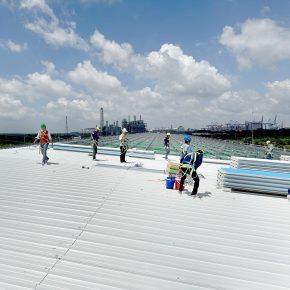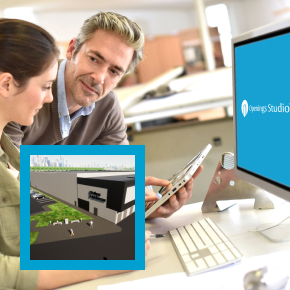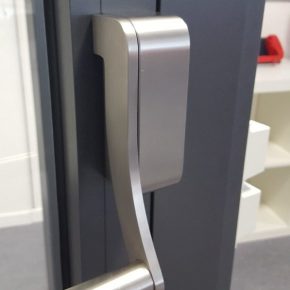
3 sustainable waste management tips for construction and engineering sector
Author: Kevin Hill, content editor and online marketing manager at Quality Scales Unlimited.
Waste management is a key area of concern within the construction and engineering sector today, with landfills already overflowing everywhere. It’s time to take salvage/reclamation opportunities, recycling or reusing materials, source reduction and waste disposal more seriously.
Like other solid waste, C&D waste management systems can be broken down into these 6 functional elements:
- Generation
- Handling, separation, storage, and processing (at source)
- Collection
- Separation, processing and transformation
- Transfer and transport
- Disposal
Here are three ways to improve construction waste disposal and waste management:
Sustainable Design
If buildings are designed to be more adaptable, or disassembled and reused when required, there will be a lower demand for demolition and removal. This can have a tremendous impact on the amount of waste generated during each building’s lifetime. Key strategies include:
- Planning adaptation or disassembly options that include relevant details such as materials and components, built drawings, structural properties, etc.
- Developing buildings with modular and standard-sized assemblies/components, and structural systems that follow a simple, open-span design.
- Designing safe access points and easy movement for workers conducting repair, disassembly or adaptation tasks in the future.
- Reducing the use of different material types, and increasing the use of durable, reusable and recyclable materials in building construction.
- Providing visible connections that are easy to access, and using screws, nails, bolts and other mechanical fastenings instead of adhesives/sealants.
Demolition & Deconstruction
Building demolition results in heavy pollution and waste generation, so deconstruction needs to be the focus instead.
Deconstruction allows for extensive recovery of usable material at every level, right from systems and assemblies to entire structures and foundations. In addition to preserving resources and minimizing landfill waste, it also boosts the economy by creating new employment opportunities.
Here are some aspects to consider while designing/removing buildings:
- Complete deconstruction is not always possible, but most buildings can be partially deconstructed by combining demolition and deconstruction methods.
- Buildings that are wood-framed are highly deconstructable, especially if they have been constructed with heavy timber or versatile, old growth wood.
- Hardwood flooring, architectural mouldings, electrical or plumbing components, unique windows/doors and other specialty materials have a high resale value.
- Paving or construction projects using high-quality brick covered with low-quality mortar are easier to deconstruct, clean and reuse in new buildings.
- Structurally sound buildings that are constructed with durable materials are the easiest to deconstruct, with the maximum salvage/recovery potential.
Eco-Friendly Construction
While the use of harmful materials is regulated by government or industry authorities, it’s also important for construction and engineering businesses to consider the environmental impact of materials they use. Here’s how to reduce it:
- Use low-impact materials that are sustainably sourced, reused from other construction projects or recycled from the construction waste stream.
- Focus on sustainable design, modular buildings or components that can be adapted or reused easily, and proper waste management systems.
- Maximize efficiency and reduce wastage by using equipment such as portable truck scales to accurately weigh materials required for construction projects.
- Include sustainable recycling/reuse practices at every stage of construction projects, focusing on deconstruction instead of demolition wherever possible.
- Set up waste reduction programs to train workers on sustainable construction, and tie up with local recycling companies at construction sites.
Sustainable construction and design is all about reducing waste and increasing reuse or recycling potential during each project. Builders, contractors and others involved in construction/design need to make an active effort to reduce C&D waste going into landfills, and a little planning is all it takes.
Latest news

15th April 2024
EJOT Colorfast chosen for Kingspan’s highly sustainable new Asian factory
More than 120,000 EJOT Colorfast self-drilling fasteners have helped Kingspan to create a thermally superior, visually-appealing building envelope for its first purpose-built manufacturing plant in South East Asia.
Posted in Articles, Building Industry News, Building Products & Structures, Building Systems, Case Studies, Posts, Restoration & Refurbishment, Retrofit & Renovation, Roofs, Sustainability & Energy Efficiency
15th April 2024
ASSA ABLOY helps new manufacturing plant achieve LEED Gold certification
Improving sustainability performance is becoming a higher priority for building developers, owners and users. One consequence is fast-growing demand for green building certifications — and therefore specification. Specialist input can make the difference between hitting and missing a project target, as ASSA ABLOY explains here…
Posted in Access Control & Door Entry Systems, Architectural Ironmongery, Articles, BIM, Infrastructure & CAD Software, Building Industry News, Building Products & Structures, Building Regulations & Accreditations, Building Services, Case Studies, Doors, Facility Management & Building Services, Information Technology, Retrofit & Renovation, Security and Fire Protection, Sustainability & Energy Efficiency
12th April 2024
Strand Hardware: D-Fine Makes a Splash for Seaside Safety
Strand Hardware’s D-Fine range is designed to withstand the harsh conditions prevalent in coastal environments. It is made from 316 stainless steel.
Posted in Access Control & Door Entry Systems, Architectural Ironmongery, Articles, Building Industry News, Building Products & Structures, Building Services, Doors, Facility Management & Building Services, Health & Safety, Innovations & New Products, Restoration & Refurbishment, Retrofit & Renovation, Security and Fire Protection
12th April 2024
GEZE UK – accredited as a Living Wage company
GEZE UK is delighted to announce that the company has been accredited as a Living Wage Employer. The real Living Wage is the only UK wage rate based on the cost of living.
Posted in Access Control & Door Entry Systems, Architectural Ironmongery, Articles, Building Industry News, Building Products & Structures, Building Services, Doors, Facility Management & Building Services, news, Security and Fire Protection
 Sign up:
Sign up: